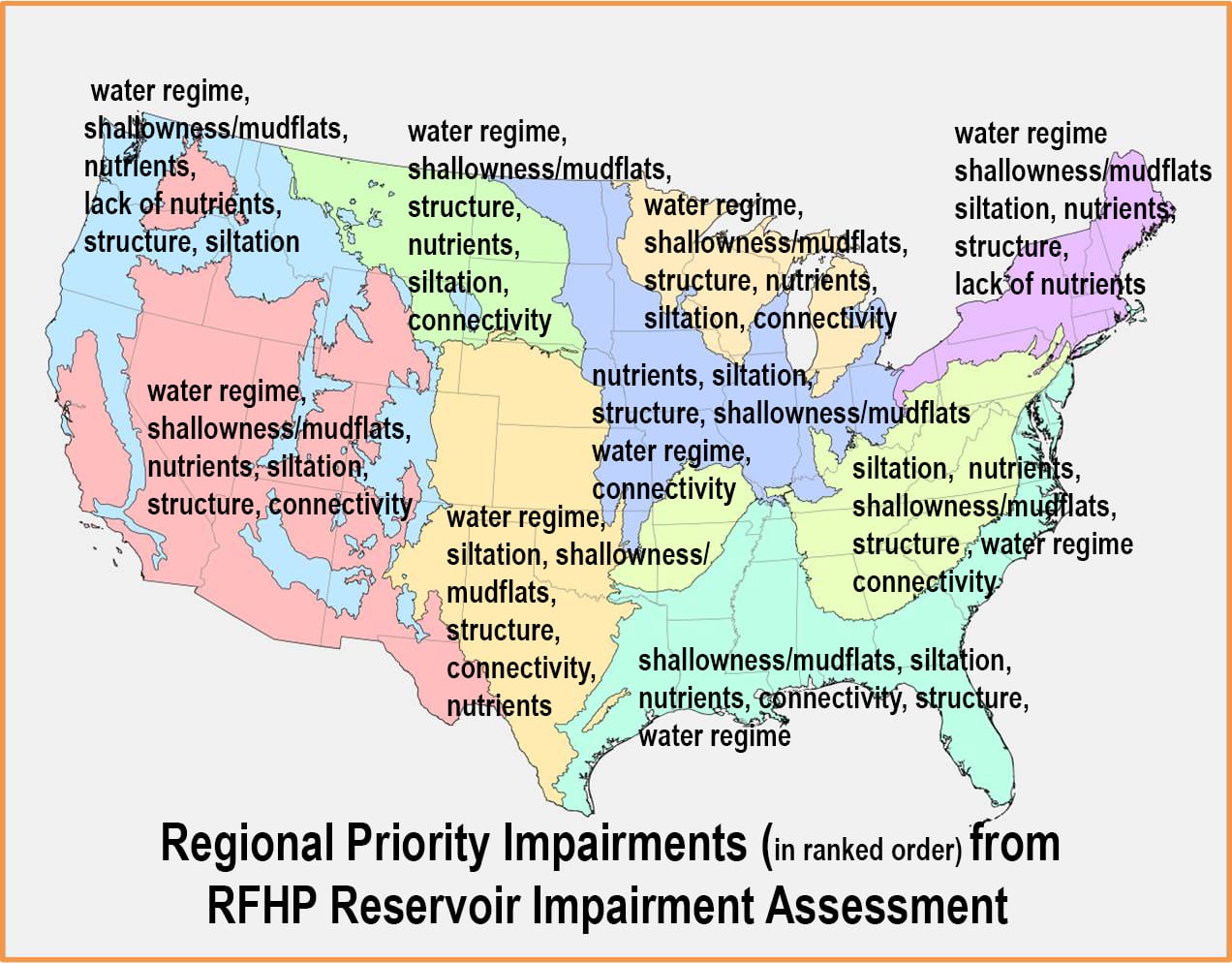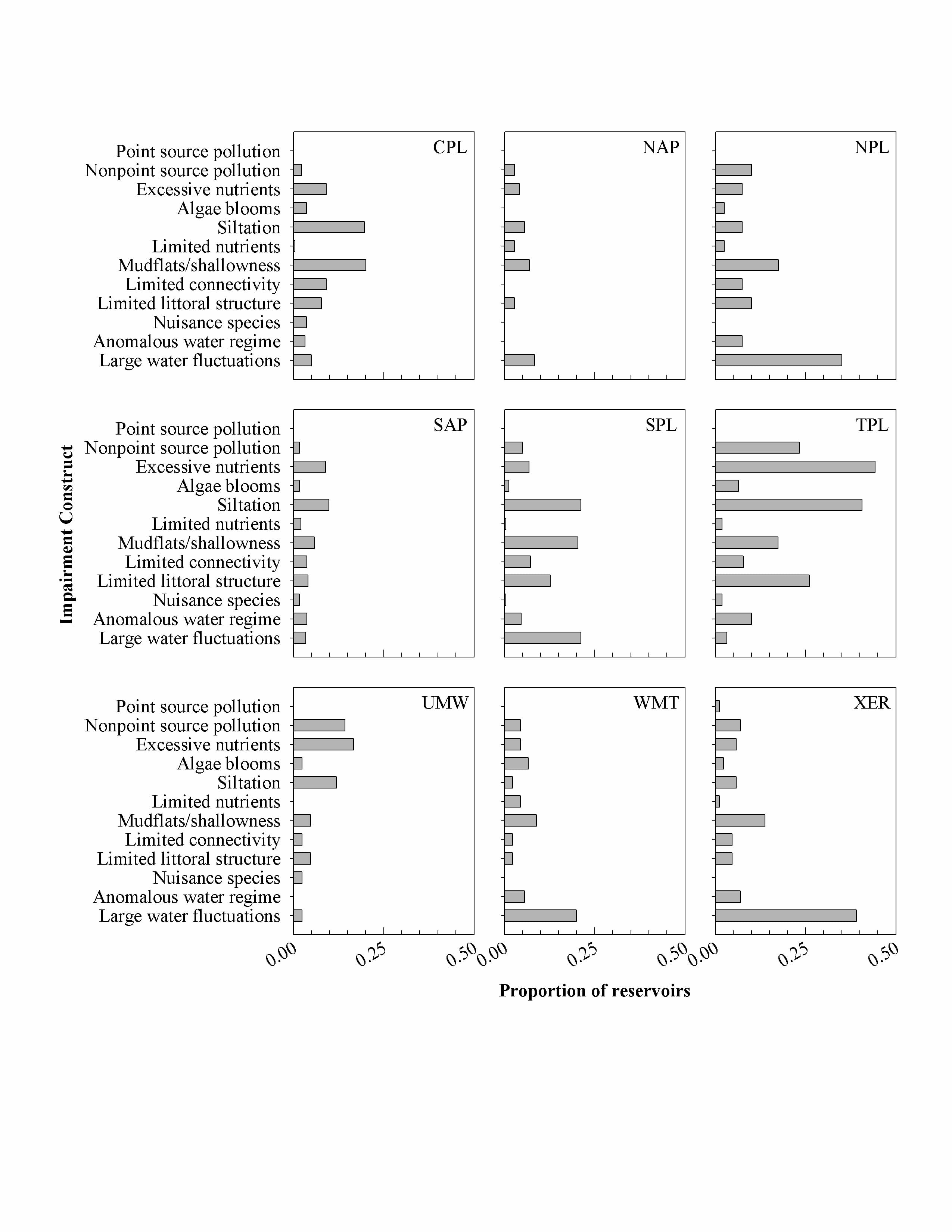Priority Habitat Impairments
Habitat impairments were identified and rated in severity for reservoirs across the U.S. by ecoregion. Based on a survey conducted in 2010, impairments were moderate-to-high severity were prioritized for each ecoregion (Figure 1). Projects funded by RFHP/FOR are chosen based partially upon their addressing of these priority challenges. Work that directly impacts said impairments is considered most appropriate for funding, with an emphasis on addressing ultimate causes of impairment. For example, sedimentation issues must be addressed before placing artificial structures in an area with mucky bottoms.

These impairments, when measured and combined into a single number, yield an Index of Reservoir Habitat Impairment (IRHI) that can be compared across the U.S.
The IRHI measures impairment on 12 major constructs, which differ spatially across wide geographic ranges in their relative importance (Figure 2). Certain impairments were widespread, affecting all or nearly all reservoir classes, and were often associated with inputs from upstream watersheds (e.g., sedimentation and non-point source pollution). The regional priority impairments have been updated since the first analysis and new information is included in RFHP’s updated Project Selection Criteria. Regional priority impairments were used for the first time to prioritize project proposals for the FY2014 funding cycle and proposals addressing the priority impairments receive higher scores in the ranking system (Figure 1). IRHI scores are not used in the Project Selection Criteria because the IRHI is a composite score of all impairments, serving only as an indicator of the relative habitat condition of a reservoir. RFHP feels that project objectives need to be focused on individual impairments due to a variety of factors, the most important of which is cost. Consequently, proposal ranking is focused on priority regional impairments. However, addressing individual impairments should lower the overall IRHI score. Future iterations of the survey (~10-year intervals) will analyze changes in IRHI scores of NFHP-funded projects.

Explore Priorities
The latest information on fish habitat impairments and fish species by ecoregion.

